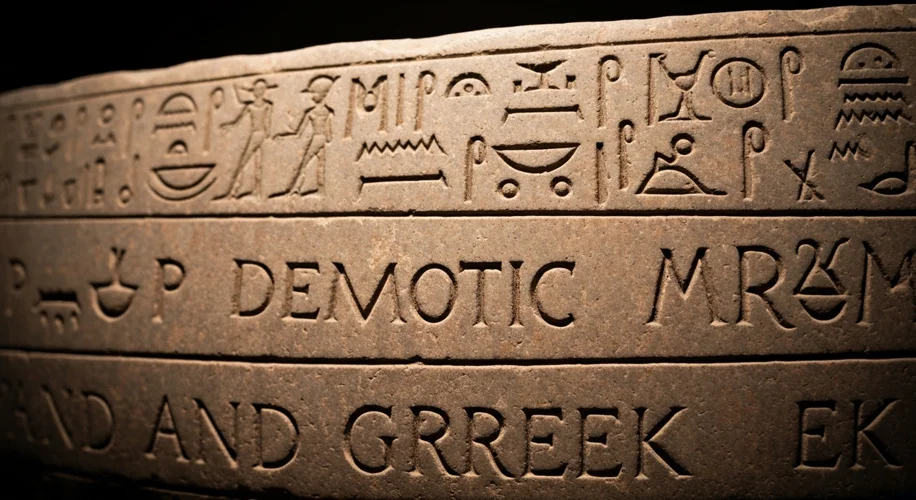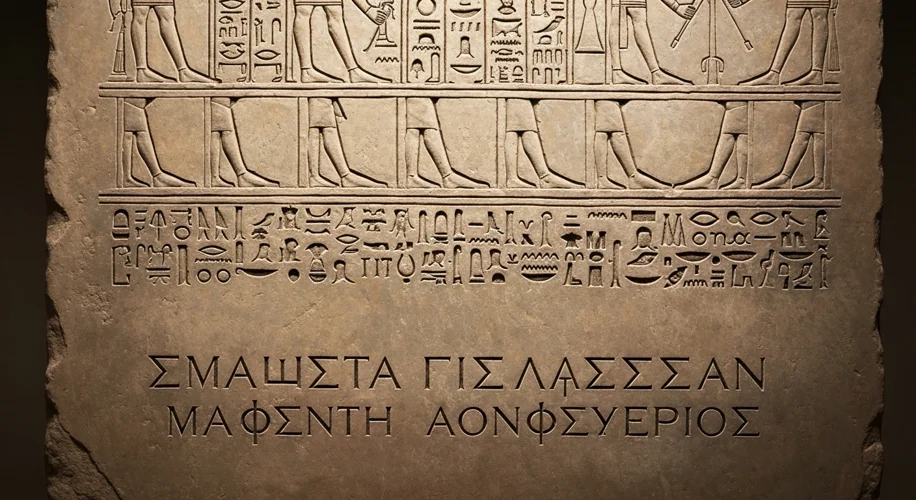Envision this: the year is 1799. The French army, led by none other than Napoleon Bonaparte himself, is campaigning in Egypt. Amidst the grandeur and the dust of this ancient land, a chance discovery would alter the course of history, breathing life back into a civilization silenced for millennia.
For centuries, the enigmatic hieroglyphs of ancient Egypt had been a tantalizing mystery. These beautiful, intricate symbols adorned temples, tombs, and papyri, hinting at a rich culture, profound beliefs, and a complex society. Yet, their meaning was lost, their secrets locked away. Scholars and adventurers had tried, but the language of the pharaohs remained stubbornly silent.
Then came the Rosetta Stone. Discovered by French soldiers near the town of Rosetta (modern-day Rashid) in the Nile Delta, this unassuming slab of black granodiorite was no ordinary rock. It was inscribed with a decree issued in 196 BC on behalf of King Ptolemy V. Crucially, the decree was written in three different scripts: ancient Egyptian hieroglyphs, Demotic script (a later Egyptian cursive script), and ancient Greek. The presence of the same text in a known language – Greek – was the key.

The stone was a linguistic treasure trove, a potential bridge between the ancient and the modern worlds. The French, recognizing its significance, took it with them, but upon their defeat, it fell into British hands in 1801. It was then transported to London, where it has resided in the British Museum ever since, a silent testament to a monumental intellectual achievement.
The race to decipher the stone was on. Many scholars contributed, but the true breakthrough came with the brilliant French scholar Jean-François Champollion. He was a linguistic prodigy, fluent in several languages from a young age, and possessed an almost obsessive fascination with ancient Egypt. He believed that hieroglyphs were not merely symbolic or alphabetic but a complex system combining phonetic and ideographic elements.
Champollion meticulously studied the stone, comparing the Greek text with the Egyptian scripts. He focused on the royal names, like Ptolemy, enclosed in cartouches – oval frames that were known to contain royal names. He realized that the hieroglyphs within these cartouches likely represented sounds. By painstakingly matching the Greek letters of ‘Ptolemy’ with the corresponding hieroglyphs, he began to unlock the phonetic values of the symbols.
His work was arduous, a true intellectual marathon. He cross-referenced his findings with other Egyptian inscriptions and texts, building a more complete understanding of the hieroglyphic system. The air in his study must have been thick with anticipation and the scent of old papyrus as he pieced together the puzzle. Imagine the sheer intellectual thrill, the moment of revelation, when the ancient language, silent for so long, finally began to speak!
In 1822, Champollion announced his groundbreaking decipherment. He had cracked the code. The Rosetta Stone had done its job. Suddenly, the walls of temples and the inscriptions on sarcophagi were no longer just decorative; they were readable texts. The history, religion, and daily lives of the ancient Egyptians could be understood in unprecedented detail.
The impact was profound. Egyptology, as a field of study, was born. The Rosetta Stone became the undisputed icon of decipherment, a symbol of how understanding a lost language can unlock an entire civilization. It allowed scholars to read the stories of pharaohs, the hymns to gods, and the administrative records of a society that had shaped human history.
Champollion’s achievement was not just an academic triumph; it was a profound act of cultural recovery. The Rosetta Stone, once a mere political decree carved in stone, became the voice of a civilization, connecting us to the distant past in a way that few other artifacts ever could. It reminds us that history is not just a collection of dates and names, but a vibrant, living narrative, waiting to be rediscovered. The silent stones of Egypt had finally found their tongue, thanks to a broken piece of rock and the relentless pursuit of knowledge.

